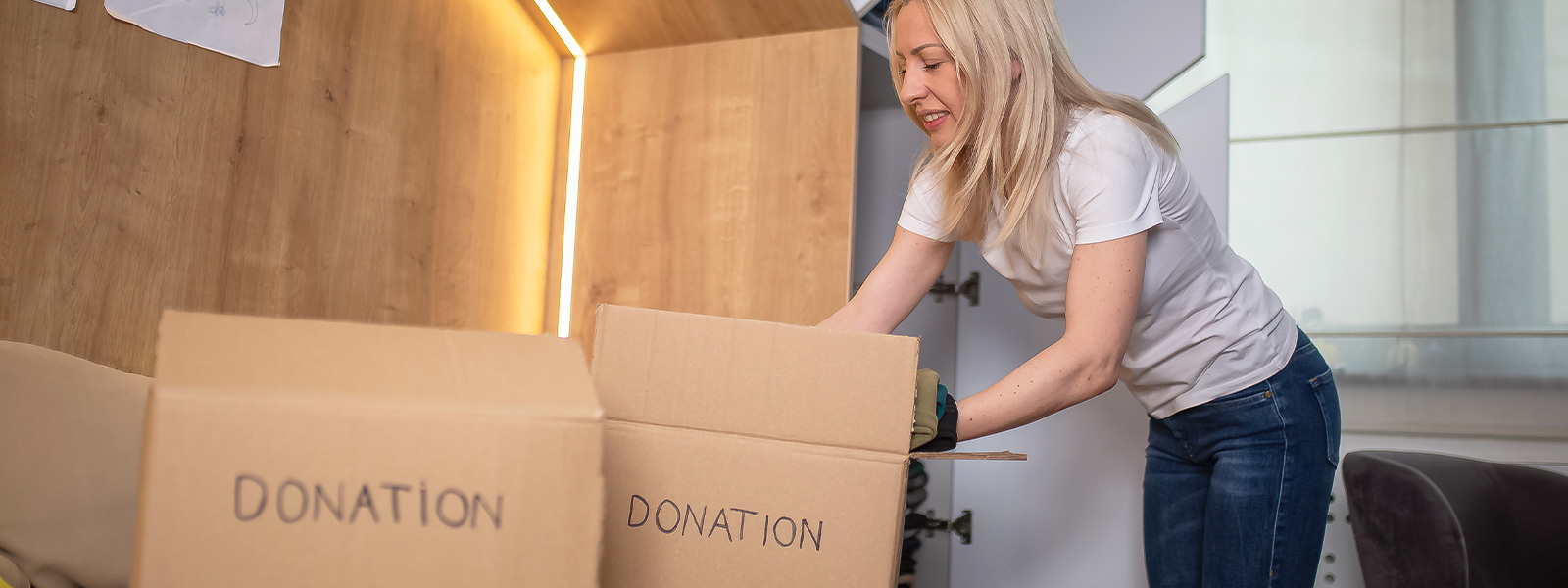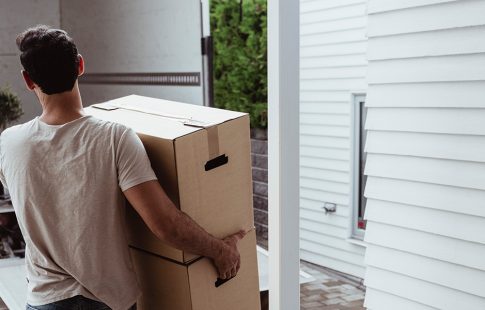Estimated reading time: 4 minutes
There are a variety of reasons to downsize—from saving money, to eliminating unused space, or becoming an empty nester. And while it can seem overwhelming, making a detailed plan of how to downsize your home can help ease the process. Here are five steps.
How to downsize your home
1. Get focused
Starting the downsizing process can be stressful. Streamline your decisions by asking yourself important questions such as:
- Why are you moving? Set a priority, whether it’s to be closer to family, save money, or maybe live in a better climate.
- What is your timeline? Establish how long your downsize will ideally take.
- What are you willing to sacrifice to fit into a smaller space? Identify how much you can get rid of and still live comfortably.

Save Up to $10,000 & Get an A-List Agent
Save and simplify when you buy, sell, or both with Mr. Cooper Real Estate Services.1
2. Get organized
One of the biggest challenges while downsizing your home is organization. To jumpstart the process:
- Take inventory: Knowing exactly what you have in your home can be eye-opening and it can highlight what you don’t need. Assess:
- How much furniture you have in each room
- How many books you own and will have to pack, and if you have any duplicates
- How many kitchen gadgets and small appliances are sitting in cupboards, etc.
- De-clutter: Go room by room and put clothing, décor, toys, kitchen gadgets, etc. into “keep” or “get rid of” piles. Try not to have a “maybe” pile as this will only make more work for later. Be sure to get rid of any multiples that you have. If you can only use one of an item at a time, there’s no need for more. One popular tip for decluttering—target items that are smaller than a shoebox.
- Sell and donate: Decide how to dispose of your “get rid of” pile to ensure you follow through. Determine what you can sell or donate to a local thrift store or charity. And if you hold a garage sale, consider donating anything that doesn’t sell. As an added bonus, you may give your unused items a new purpose or earn a tax deduction.
3. Plan ahead
Deciding which furniture to keep when downsizing your home should come down to functionality. In a smaller space, multipurpose pieces are your best friend. Is your sofa also a pull-out bed? Great! Does your table have a leaf that you can remove to save space? Perfect! Once you know where you’re moving or how much square footage you’ll want, start planning out the space.
Measure your furniture to make sure it will fit and consider sketching furniture arrangements out to see what works best. Map out every room, closet, and cabinet to plan where everything will go. There are also a range of apps and websites that can help you stage spaces virtually. All of these steps can save time and hassle on moving day.
4. Digitize
Books, photo albums, old files, VCR/DVD videos, and other small items can take up a lot of space and be difficult to part with. Digitizing pictures and videos or replacing key books with digital/audio books can be a great way to save space and memories. For example, try creating a slide show with family pictures for your computer or TV to continue enjoying them after digitizing them.
5. Communicate
Be sure to communicate with your family, friends, or roommates who are downsizing with you and get them on board with the plan. For example, one moving company suggests letting kids see a picture of their next room. Once they know how much space they’ll have, let them take the first crack at sorting things for donating or throwing away. Taking time to share in next steps can help avoid conflicts, confirm goals, and improve your overall experience.
Selling or buying? Mr. Cooper has great offers to help! We can connect you with a top agent, lower your mortgage rate, or help you get cash back on a home purchase or sale. Learn more here.






